You May Lose Energy But You Can't Lose Motivation: Alex Txikon on Winter Everest
Dream WanderlustPhotographs: Alex Txikon
Category: Expedition, Climbing, Interview
Date of Publication: Jun 4 , 2020
Two months* after his third attempt to summit the 'Winter Everest' without supplemental oxygen, Alex Txikon, the eminent Winter Maven, voices his dogmas and determinations with Winter Everest. In an exclusive interview with Dream Wanderlust, the 38-year-old Spanish alpinist speaks of his fascination with an oxygen-free summit to Everest in Winter; why it is an ever-lasting aspiration and what take-aways he assimilated in course of each attempt.
"It is a very special mountain to me, not because it is the highest. In my point of view, it does have a very special history. It is different in every season," said the world-class alpinist.
Youngest of thirteen siblings, this climber-cum-cinematographer began his career on 8000ers at a tender age of 21. Having bagged Broad Peak as his first 8000er, he went on to achieve an awe-inspiring feat in the field of Winter-8000ers, vis-à-vis, his iconic oxygen-free ascent on Nanga Parbat in 2016, together with Muhammad Ali Sadpara and Simone Moro.
"Happiness comes naturally to us when we are on these kind of expeditions. People just look at what we do. Everything depends on how high we reach but in reality, it is far more than this kind of mentality," said Alex while pointing out the positive take-aways from his entire Winter Everest attempt.
This ace Spaniard ventured out on his first Winter expedition in the Karakoram – starting with Gasherbrum I in 2011, after nine ascents on 8000ers without a breathing mask. Once Edurno Pasaban's Project '14x8000' came to an end in 2010, Alex chose to turn to a new-fangled segment to exercise alpinism – Winter 8000ers Without Supplemental Oxygen.
And in his novel opinion, achieving an oxygen-less summit to the Winter Everest is the only objective to draw a full circle of his Winter career.
"It was totally different than other two attempts. A lot of stones and rocks fell down like bullets from the slopes of Lhotse West and also, from the highest part of this mountain. Because of all these granites fell down and strong wind, it became very complicated for us on the Lhotse slope." – is how Alex sums up his Winter 2020 in the Himalayas. As strong wind and befalling granites altered the fate of his third attempt, Alex is hopeful that he is to return to Everest in future. And for that, he chose survival over his chancier obsession with the highest mountain on planet earth.
Presently working on a new book and another adventure film during this pandemic, Alex also talks about his acclimatization phase in Antarctica in last December and a January-ascent to Ama Dablam, as well as how that aids him to prepare for Everest in Winter.
The full version of his interview with Dream Wanderlust is as follows:
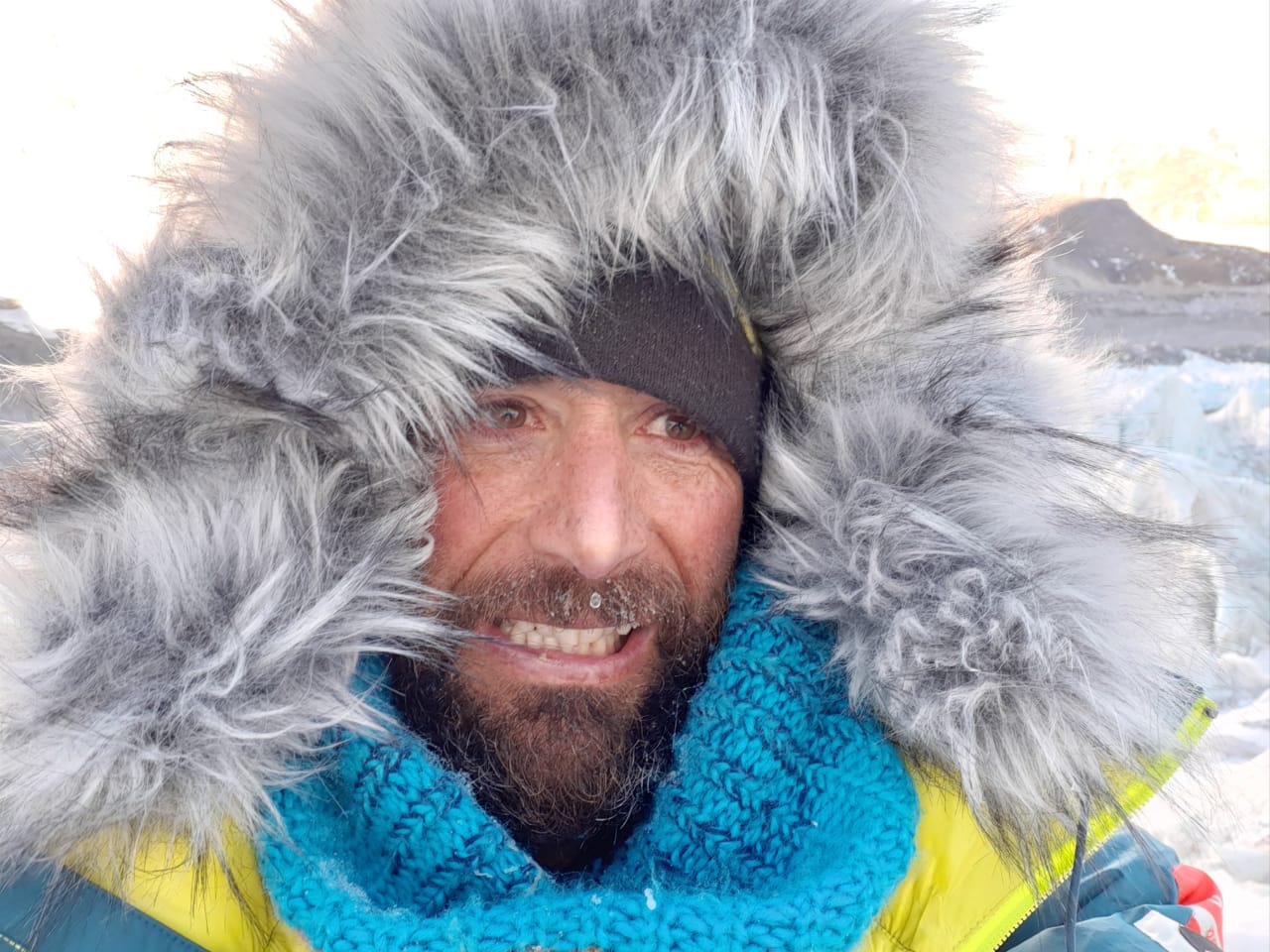
Alex Txikon
Interview with Alex Txikon
DW: You have attempted three Winter Expeditions on Everest. Why it is so special for you to climb Everest in Winter? What all challenge(s) had you encountered during these expeditions?
Alex: I attempted Everest in the Winter of 2016-17, 2017-18, 2019-20. It is a very special mountain to me, not because it is the highest. In my point of view, it does have a very special history. It is different in every season.
People who climb 8000m peaks, you see the list - mostly, the ones who want to climb all 8000m Himalayan peaks, aim for Everest as their first or second 8000er. I can tell you that in my case, I attempted Everest for the first time, after my 11th 8000er - 12th to be precise, since I climbed Shishapangma twice.
So yes, it is a very special mountain to me also because, I am currently focusing on Winter expeditions and to be able to climb Everest, is undoubtedly a big challenge.
DW: In 2016-17, you reached 8000m and in 2017-18, you reached 7900m. This year (2019-20), you ended up at 7000m. What are the positive take-aways from this year's expedition?
Alex: I really like this question. You mentioned it year by year and the altitude has gone lower and lower. This is because of the adverse conditions but you can easily understand and identify that inside these attempts, we did a great many things.
With every year, we climbed even faster than the last time. We fixed the ropes faster and the number of people in the team got lower than the previous times. In our first attempt, there were twelve members, nine in the second, and finally only four in our last attempt. This time my two other Spanish climbers (Jonathan Garcia and Oscar Cardo) had to leave early because they could not attempt it properly.
So, that is the idea of Everest. Smaller the team is, the faster it is. It is not easy to conquer Everest in Winter with such conditions. It is the highest mountain. It is not as same as attempting other lower 8000ers. I hope that in future, we can attempt Everest again in Winter. But I would like to fight again with my team. Happiness comes naturally to us when we are on this kind of expeditions. People just look at what we do. Everything depends on how high we reach but in reality, it is far more than this kind of mentality.
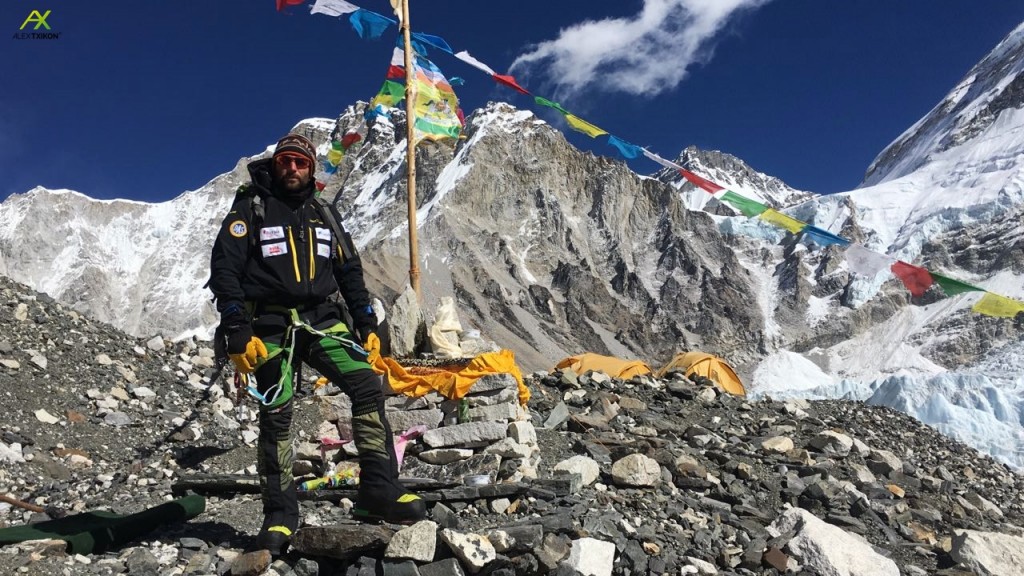
Everest Winter 2016-17: Alex Txikon at the Base Camp of Everest
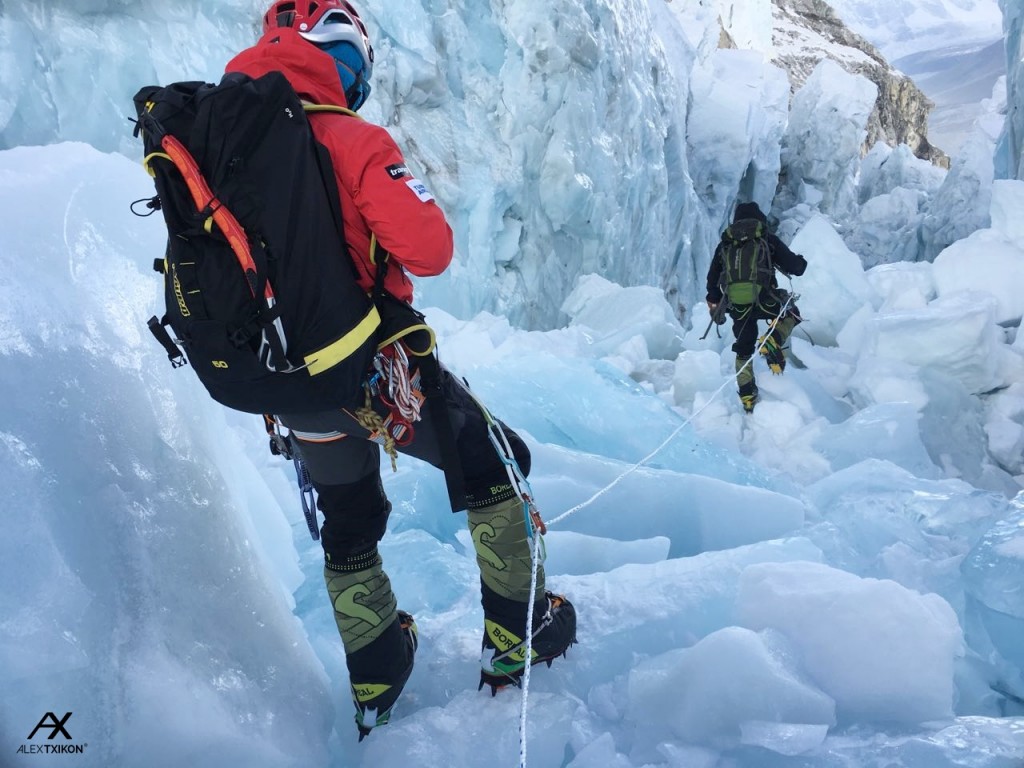
Everest Winter 2016-17: Alex Txikon and Carlos Rubio [R to L] at Khumbu Ice Fall
DW: How is this year's expedition different from the previous two attempts? Why was it difficult to cross beyond 7000m this year?
Alex: This year was different. First of all, it is because the weather conditions put us up in trouble. So, it was totally different than other two attempts. A lot of stones and rocks fell down like bullets from the slopes of Lhotse West and also, from the highest part of this mountain. Because of all these granites fell down and strong wind, it became very complicated for us on the Lhotse slope. Then in the last push, the team of Seven Summits also came with us for another Guinness Record. In 20 hours, weather changed completely and we got a meter-length snow on the Lhotse slope. So, it became totally impossible for us to keep climbing in that condition. It was quite complicated and super-super dangerous. That's the only reason we finally took a decision not to climb up. I preferred to survive. I love to be in the mountains. I am obsessed but it can become riskier.
DW: After two consecutive years (2016-17 & 2017-18), you came back to Everest this Winter, having attempted K2 in between (Winter 2018-19). What did you learn from your K2 Expedition last year? What made you come back to Everest again?
Alex: On K2, I have learnt a lot of things as I did from my first Winter expedition. I wanted to feel the perception of motivating myself for Everest. I identified that K2 is a lot competitive and I did not want to be part of that. So unfortunately, we made this decision last year because of the Russian team. They were totally obsessed and too much in rush. They did not respect the mountains. So yeah, simple. I did not want to be part of it.
My main objective is always Everest. On our second attempt to Everest, on 20th January, 2018, we also summited Pumori. That was super nice for us. Even this year, we were really happy after the summit to Ama Dablam in Winter on 25th January. But in our cases, our aim was to survive as a team in such a difficult condition. It is nice to make other Winter summits but it is not the main aim.
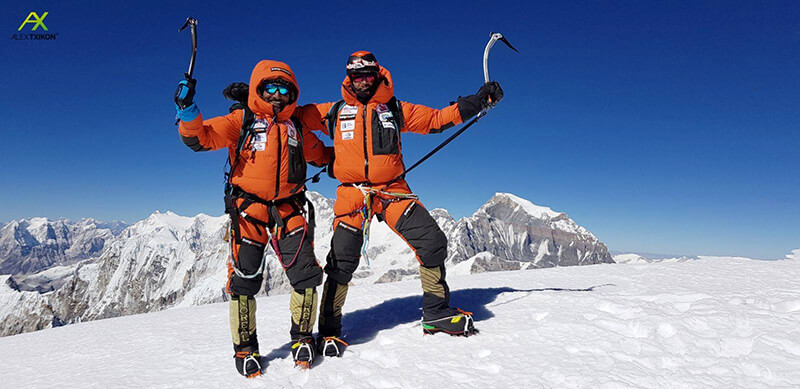
Everest Winter 2017-18: Alex Txikon and Muhammad Ali Sadpara on the top of Pumori [R to L]
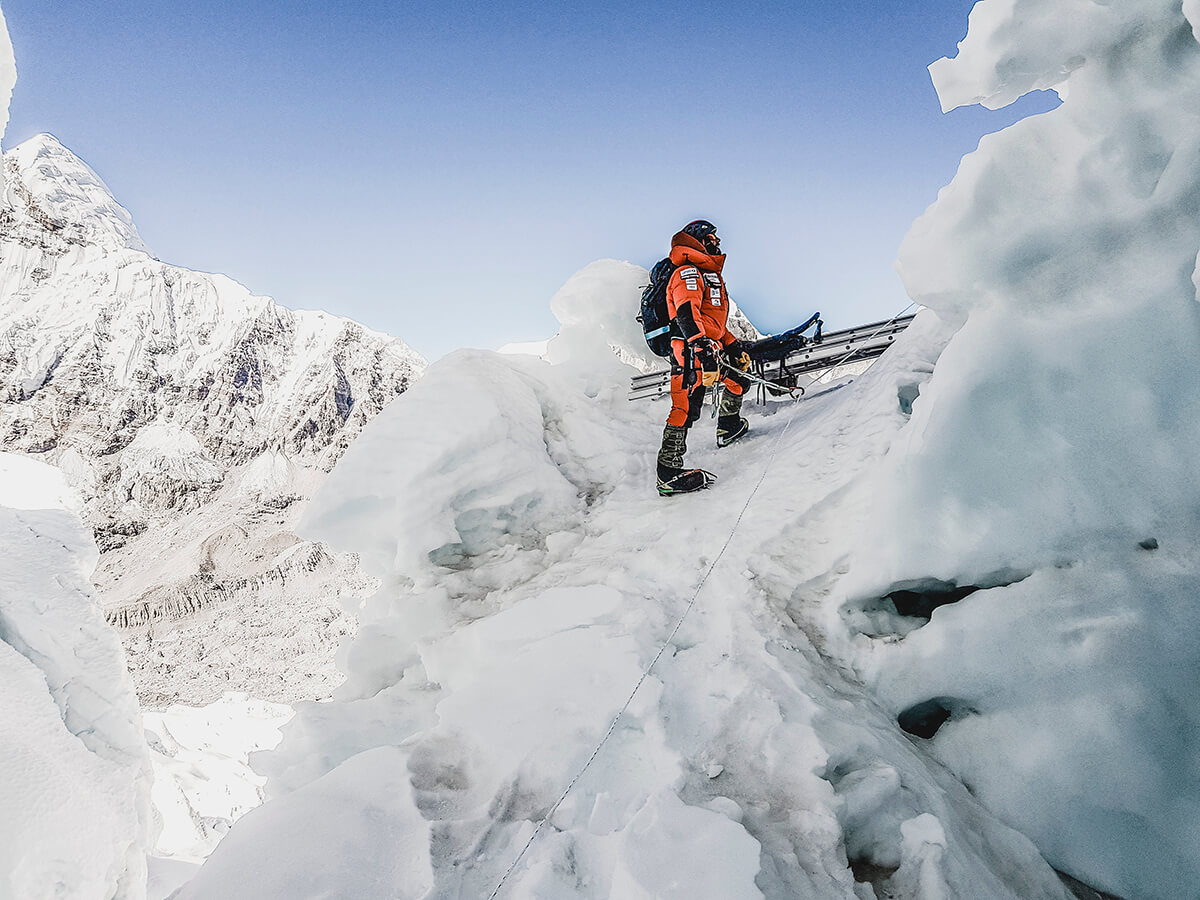
Everest Winter 2017-18: Alex Txikon at Khumbu Ice Fall
DW: Do you choose to climb in Winter to
i) avoid the crowds
ii) set a new benchmark
iii) make the game more challenging and interesting?
Alex: No, this is a step in my life amongst many different others. I started my journey in the Himalayas – thanks to Edurne Pasaban. In 2010, she became the first woman in the world to complete all fourteen 8000ers on 17th May. That is the reason why I am happy to have my past experience.
Why Winter ascents? It is because, I had an opportunity to do so in 2011 and I decided that I want to keep up with my past expeditions in a new world, a new life, and in a new climbing style. It is just that my life took me there. Also, because I had been dreaming about doing this in Winter for a long time. It is my passion, my motivation. Also, I was lucky because I got the opportunity – thanks to my friend Ali Nagari. It is because of him that I am in Winter expeditions.
I am happy with what I am, what I am doing. I am doing exactly what I really wanted to do and what I felt like doing. That is the purpose I am still moving. I am just trying to follow my animal instinct. I am trying to do the best that I can - something that is motivating enough for me.
DW: Before coming to Everest, you had gone to a few expeditions in Antarctica last December. Then you had summited Ama Dablam as a part of your "Road to Himalayas" project. How did those previous expeditions help you on your Everest attempt?
Alex: Before attempting the Winter Everest, there is, of course, Ama Dablam for about 15-17 days, and before that, we travelled to Antarctica for a month. In that sense, this kind of ascent makes us more acclimatized and relaxed in the weather there, also more flexible and the harmony amongst us also improves. In Everest, sometimes, you may lose energy but you cannot lose your motivation. That is the reason why I always like to go on these kinds of ascents before big expeditions in life. That is also why I really like climbing in Winter. I think I become stronger in these ascents before I go to attempt the final ascent.
DW: German alpinist Jost Kobusch also attempted Everest this Winter by the West Ridge route. Have you ever thought about changing your route especially when it was getting difficult to climb on?
Alex: Jost and I have a good friendship, especially when we were in the Base Camp. He was alone. He was with one of his friends in the Base Camp in the beginning. He also fixed the route until Camp-1. He climbed through the Loh La Col. He was also very far from the summit but above 7000m, probably 7500m [Jost climbed up to 7350m]. In my opinion, it is very risky to pass the Loh La Col alone, firstly, and then as soon as you pass to the Tibetan side, you reach the West Ridge. It is quite complicated. Going further from 7500m through this route is not easy. Because in Winter, reaching the real summit becomes far more difficult. But he is very nice and a very funny guy. He has done a very good job.
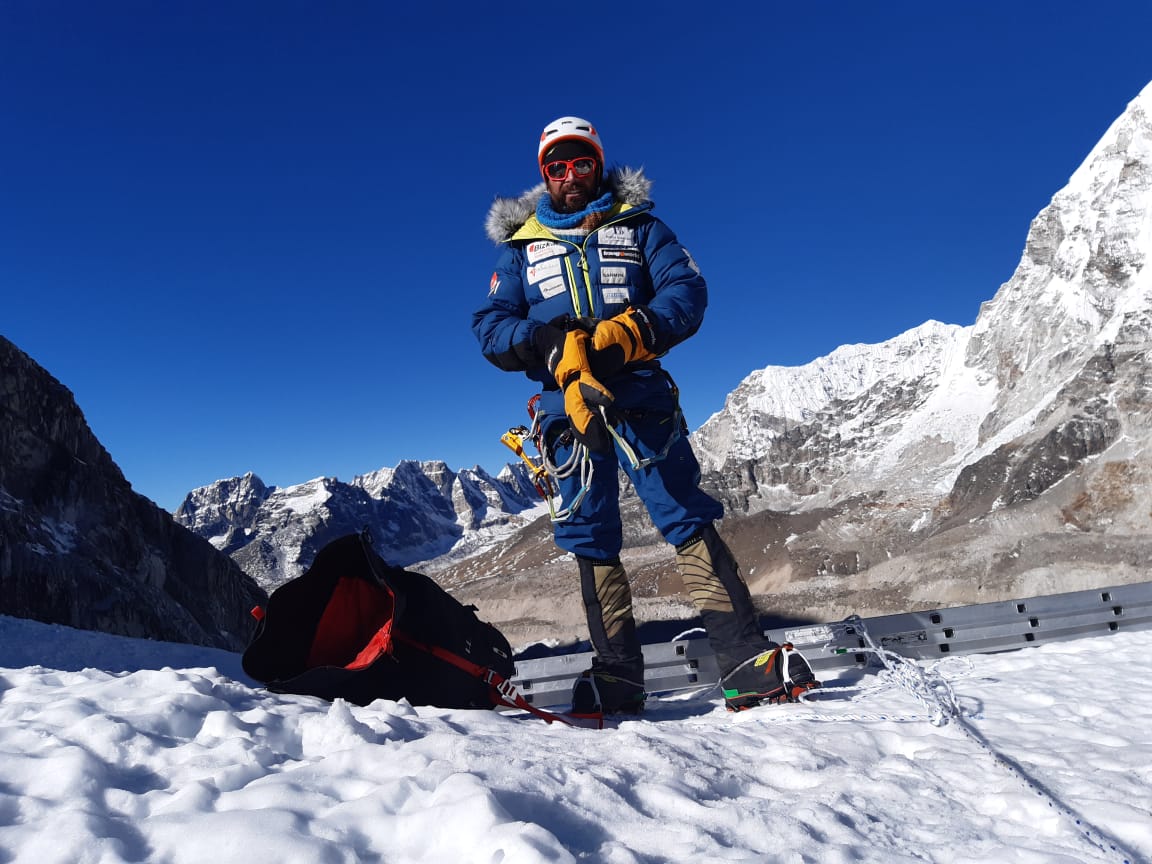
Everest Winter 2019-20: Alex Txikon at the Base Camp of Everest
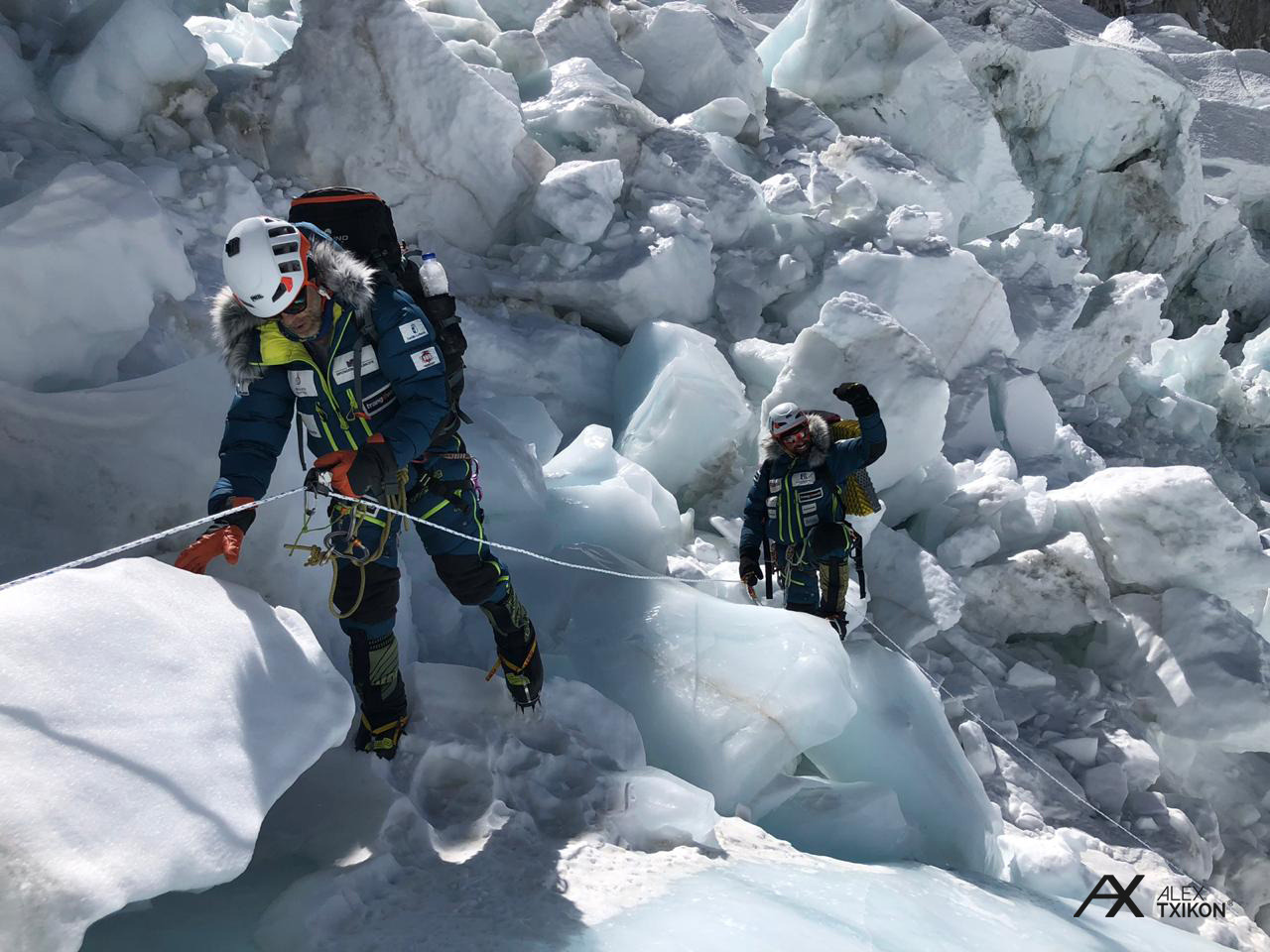
Everest Winter 2019-20: Alex Txikon [R] negotiating seracs while climbing
DW: In near future, will you still be climbing the highest slopes, or working on lower and safer alternatives?
Alex: Yes, sure. Right now, we are working on a new book and a new movie. Maybe, we will do some new expeditions, but of course, it depends on the current situation around. It depends on us, also on the pandemic. We do have enough motivation for climbing further. In my life, my only passion is to climb in the lap of nature. As soon as the pandemic is over, we will see what we can do. So, of course, I want to come back to the high mountains, but also I would like to do other works.
DW: Thank you so much for the interview. Stay safe in between this pandemic.
His all Everest Winter Expeditions:
2016-17 - Everest (8848m):
Alex led a 2-member Spanish team (Alex himself with Carlos Rubio) by the South Col of Everest. The expedition ended at 8000m.
2017-18 - Everest (8848m):
Alex attempted Everest with Muhammad Ali Sadpara by the South Col. The expedition ended at 7900m. As a part of their preparation for Everest, both of them made the Winter ascent of Pumori with two Sherpas - Nuri and Temba Bhote without supplemental oxygen.
2019-20 - Everest (8848m):
Alex with his Sherpa team attempted Everest by the South Col. The expedition ended at 7300m.
* The Interview was taken on 5th May, 2020
Related Articles
Place your ad here. Call +919163231788 or Contact Us









